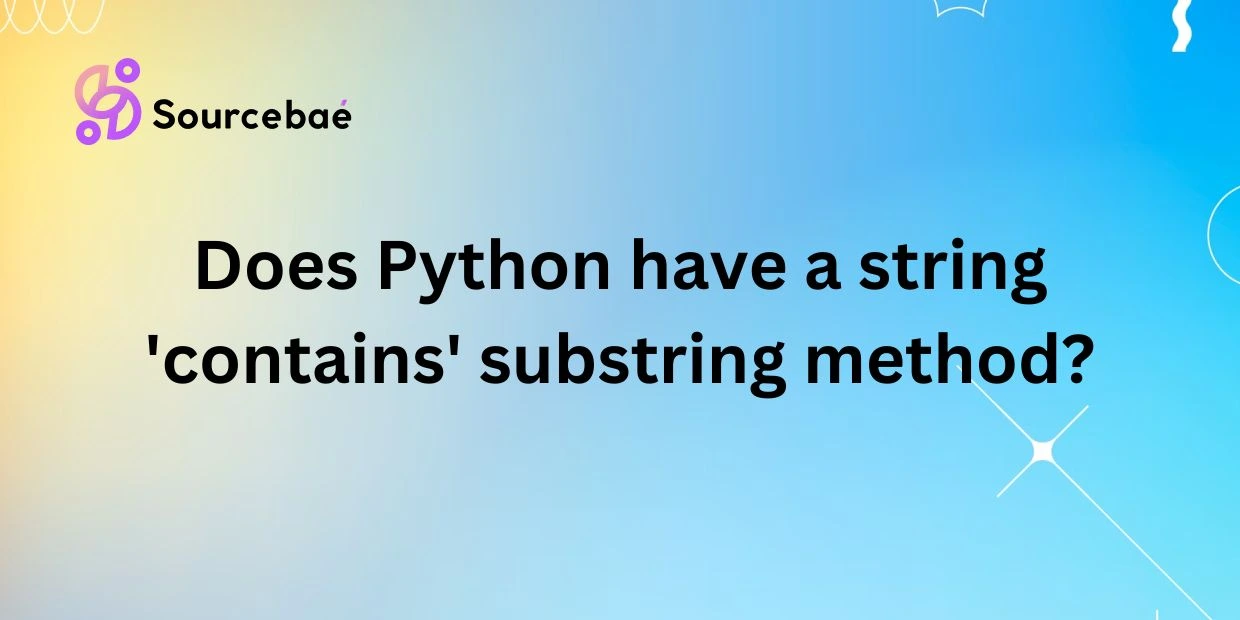Python is a versatile programming language known for its powerful string manipulation capabilities. Strings are an essential data type in programming, and the ability to manipulate substrings within a string is crucial for various tasks such as searching, finding patterns, and data processing. In this blog post, we will delve into the concept of substring manipulation in Python, specifically focusing on the ‘contains’ substring method and how it can be utilized in programming.
Introduction
A. Explanation of Python’s string manipulation capabilities
Python provides a wide range of built-in methods and functions for working with strings. Strings in Python are immutable sequences of characters and are treated as objects with methods that can be called on them. These methods allow developers to perform various operations on strings, such as concatenation, slicing, formatting, and searching for substrings.
B. Overview of the importance of substring manipulation in programming
Substring manipulation is the process of extracting or manipulating a portion of a string within a given string. This functionality is essential in programming as it allows developers to perform tasks like searching for specific patterns or keywords within a large text, extracting data from structured strings, and manipulating text data for processing and analysis.
What is the ‘contains’ substring method?
A. Definition of the ‘contains’ method in programming
The ‘contains’ substring method, also known as the ‘in’ operator in Python, is a built-in function that allows developers to check if a string contains a specific substring. This method returns a boolean value (True or False) based on whether the specified substring is present in the target string.
B. Explanation of how the method is used to check if a string contains a specific substring
To use the ‘contains’ method in Python, you simply use the ‘in’ operator followed by the substring you want to check for in the target string. The syntax looks like this:
target_string = "Hello, world!"
substring = "Hello"
if substring in target_string:
print("Substring found!")
In this example, we are checking if the substring “Hello” is present in the target string “Hello, world!”. If the substring is found, the message “Substring found!” will be printed to the console.
Does Python have a built-in ‘contains’ substring method?
A. Overview of Python’s string manipulation methods
Python offers several string manipulation methods that can be used for substring checks, including the ‘in’ operator, the find() method, the index() method, and regular expressions. Each of these methods has its own use cases and advantages, depending on the specific requirements of the task at hand.
B. Explanation of Python’s ‘in’ keyword for substring checks
The ‘in’ keyword in Python is a powerful and versatile tool for checking if a string contains a specific substring. It can be used with various data types, including strings, lists, tuples, sets, and dictionaries. The ‘in’ keyword returns a boolean value based on whether the specified element is present in the iterable object.
C. Comparison of the ‘in’ keyword to the ‘contains’ method
While Python does not have a dedicated ‘contains’ method like some other programming languages, the ‘in’ keyword serves the same purpose and is widely used for substring checks in Python. The ‘in’ keyword offers a simple and concise syntax for checking substring presence and is preferred by many developers for its readability and ease of use.
FAQs
A. What is the syntax for using the ‘in’ keyword in Python?
The syntax for using the ‘in’ keyword in Python is straightforward. You simply write the substring you want to check for followed by the ‘in’ keyword and the target string or iterable object. Here’s an example:
target_string = "Python is a powerful programming language"
substring = "Python"
if substring in target_string:
print("Substring found!")
In this example, we are checking if the substring “Python” is present in the target string “Python is a powerful programming language.”
B. Can the ‘in’ keyword be used with variables?
Yes, the ‘in’ keyword can be used with variables in Python. You can store the target string and substring in variables and then perform the substring check using these variables. Here’s an example:
target_string = "Python is a versatile language"
substring = "versatile"
if substring in target_string:
print("Substring found!")
C. Are there any limitations to using the ‘in’ keyword for substring checks?
While the ‘in’ keyword is a powerful tool for substring checks in Python, it is important to note that it performs exact substring matches. If you need to perform more complex searches, such as case-insensitive matches, partial matches, or regular expression-based searches, you may need to use other methods like regex or custom functions.
Conclusion
In conclusion, substring manipulation is a fundamental aspect of programming, and Python provides robust tools for working with strings and substrings. The ‘in’ keyword in Python serves as a versatile and efficient method for checking if a string contains a specific substring, offering simplicity and readability in code. By understanding Python’s string manipulation capabilities and utilizing the ‘in’ keyword effectively, developers can enhance their programs’ functionality and efficiency when working with strings.
In summary, Python’s ‘in’ keyword provides a convenient way to perform substring checks, and its flexibility makes it a valuable tool for developers working with text data. By leveraging Python’s string manipulation methods and mastering the use of the ‘in’ keyword for substring checks, programmers can streamline their code and achieve better results in their projects.
In conclusion, leveraging Python’s powerful string manipulation capabilities and utilizing the ‘in’ keyword for substring checks can greatly enhance a developer’s ability to process and analyze text data effectively. By understanding the importance of substring manipulation and Python’s capabilities in this area, programmers can create more efficient and reliable solutions for a wide range of applications.





